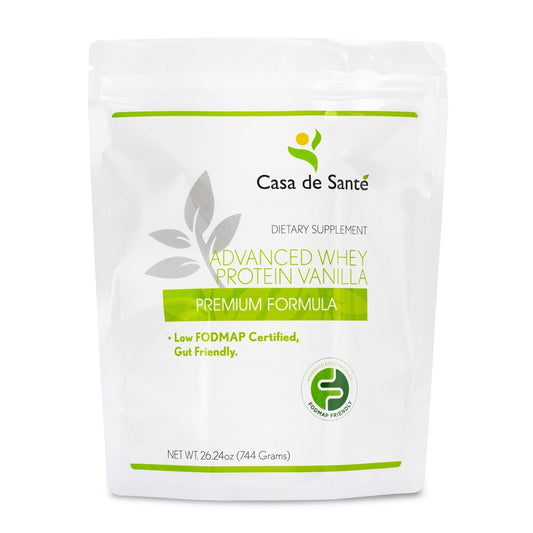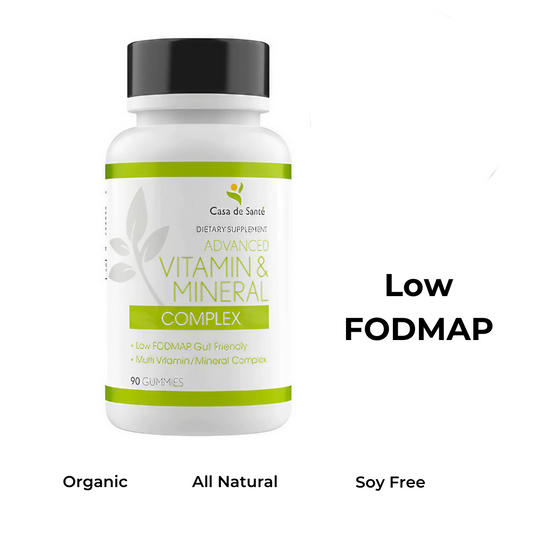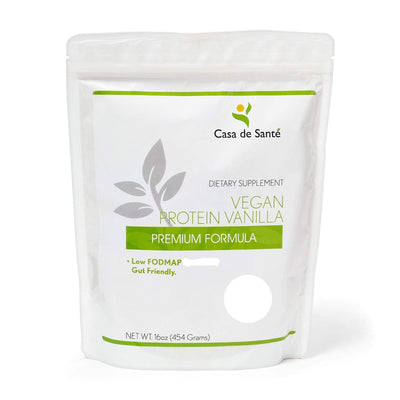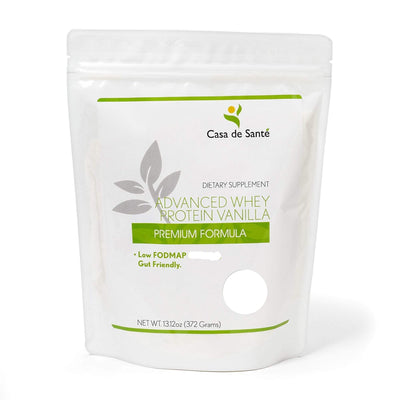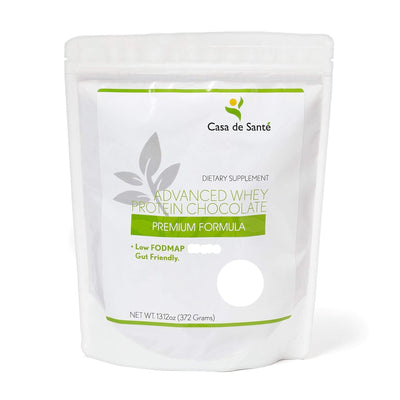Is Polenta Gluten-Free? A Comprehensive Guide to Cornmeal Safety
Is Polenta Gluten-Free? A Comprehensive Guide to Cornmeal Safety
For those navigating the challenges of gluten intolerance or celiac disease, finding safe and delicious food options can feel like a constant treasure hunt. Polenta, with its creamy texture and versatile nature, often raises questions in the gluten-free community. This golden Italian staple has gained popularity in kitchens worldwide, but confusion persists about its gluten content and safety for those with gluten sensitivities.
Whether you're newly diagnosed with celiac disease, managing non-celiac gluten sensitivity, or simply reducing gluten in your diet, understanding exactly what's in your food is essential. Let's dive into the world of polenta and cornmeal to uncover the truth about its gluten status and how to enjoy it safely.
What Exactly Is Polenta?
Polenta is a traditional Italian dish made from coarsely ground cornmeal. This simple yet versatile food has humble origins as a peasant staple in Northern Italy, particularly in regions like Lombardy, Veneto, and Piedmont. Historically, it provided an affordable, filling base that could be paired with whatever seasonal ingredients were available.
In its most basic form, polenta consists of cornmeal cooked slowly in water or stock until it reaches a thick, porridge-like consistency. Once cooked, it can be served creamy and soft (similar to grits), or allowed to set and then sliced, grilled, baked, or fried. The versatility of polenta makes it a beloved ingredient in countless dishes, from a comforting side to an elegant base for gourmet toppings.
Traditional Ingredients in Polenta
Traditional polenta is remarkably simple in its composition. The classic recipe calls for just cornmeal, water, and salt. Some variations might include butter, cheese, or herbs for additional flavor, but the base remains the same: ground corn. This simplicity is part of what makes polenta potentially appealing for those on restricted diets.
The cornmeal used for authentic polenta is typically made from flint corn, a variety with hard kernels that produces the distinctive texture polenta is known for. Unlike some other corn products that might contain additives or be processed in facilities with other grains, traditional polenta focuses on highlighting the natural flavor and texture of corn itself.
Different Types of Polenta Products
Today's market offers several forms of polenta to suit different cooking needs and time constraints. Traditional dry polenta cornmeal requires the longest cooking time (typically 30-45 minutes of stirring) but offers the most authentic texture and flavor control. Instant or quick-cooking polenta has been pre-processed to reduce cooking time to just a few minutes, though purists might argue it sacrifices some textural quality.
Pre-cooked polenta tubes or logs offer the ultimate convenience, requiring only slicing and heating before serving. These ready-made options have made polenta more accessible to busy home cooks but require careful label reading for those with gluten concerns. The market also offers specialty varieties like white polenta (made from white corn varieties) and organic options that avoid certain pesticides and farming practices.
The Gluten Question: Is Polenta Naturally Gluten-Free?
The short answer is yes—pure polenta made from 100% cornmeal is naturally gluten-free. Corn is not a gluten-containing grain like wheat, barley, or rye. This makes basic polenta an excellent option for those avoiding gluten, provided it hasn't been cross-contaminated during processing or preparation.
The confusion about polenta's gluten status often stems from its similarity to other grain-based dishes or the fact that it's sometimes served alongside gluten-containing foods. Additionally, some commercially prepared polenta products may contain additives or be processed in facilities that also handle wheat, creating cross-contamination risks that aren't inherent to polenta itself.
Understanding Gluten and Where It's Found
Gluten is a family of proteins found in certain grains—primarily wheat, barley, and rye. It gives dough its elastic texture and helps bread rise. For people with celiac disease, even tiny amounts of gluten can trigger serious autoimmune responses that damage the small intestine. Those with non-celiac gluten sensitivity may experience various uncomfortable symptoms without the intestinal damage.
Corn is botanically distinct from these gluten-containing grains. It belongs to a different plant family altogether and naturally contains no gluten proteins. This fundamental botanical difference is why pure cornmeal and properly prepared polenta can be safe options for those avoiding gluten.
Potential Cross-Contamination Concerns
While corn itself doesn't contain gluten, cross-contamination can occur at multiple points in the food supply chain. Farmers may rotate crops, growing corn in fields that previously held wheat. Shared harvesting equipment, transportation vehicles, and processing facilities can all introduce trace amounts of gluten into otherwise gluten-free cornmeal.
Even in food service settings, cross-contamination risks exist. A restaurant kitchen preparing polenta might use the same pots, utensils, or surfaces that have contacted gluten-containing ingredients. For those with celiac disease, these trace amounts can be problematic, making it essential to understand not just the ingredients but the entire production process of the foods they consume.
Reading Labels: What to Look for When Buying Polenta
Not all cornmeal or polenta products are created equal when it comes to gluten safety. Careful label reading is essential for those with celiac disease or serious gluten sensitivity. The safest approach is to look for products specifically labeled "gluten-free," which in the US means they contain less than 20 parts per million (ppm) of gluten—the threshold considered safe for most people with celiac disease.
Beyond the gluten-free label, check the ingredient list for any wheat-derived additives or ambiguous terms like "natural flavors" or "modified food starch" that could potentially contain gluten. Some polenta products, particularly flavored or instant varieties, may include additional ingredients that introduce gluten.
Certification Symbols and What They Mean
Several third-party organizations certify products as gluten-free, often with more stringent standards than government regulations require. The Gluten-Free Certification Organization (GFCO), for example, certifies products containing less than 10 ppm of gluten—half the FDA threshold. Their symbol on packaging provides additional assurance for highly sensitive individuals.
Other helpful certifications include the National Celiac Association's "Certified Gluten-Free" mark and the Celiac Support Association's "Recognition Seal." These organizations require rigorous testing and facility inspections before granting their endorsements, making products bearing their symbols particularly trustworthy choices for those with serious gluten concerns.
Common Additives and Ingredients to Watch For
While traditional polenta contains just cornmeal, water, and salt, commercial products often include additional ingredients. Watch for maltodextrin (which can be derived from wheat, though it's usually from corn in the US), modified food starch (unless specified as corn-based), and flavor enhancers that might contain gluten-derived ingredients.
Pre-seasoned or flavored polenta products deserve special scrutiny. Cheese flavorings, herb blends, and savory additives sometimes contain gluten as a carrier or binding agent. When in doubt about any ingredient, contacting the manufacturer directly is the safest approach for those with severe gluten reactions.
Making Polenta at Home: Safe Preparation Tips
Preparing polenta from scratch gives you complete control over ingredients and minimizes cross-contamination risks. Start with certified gluten-free cornmeal and dedicate clean cooking utensils to your gluten-free preparation. Even a wooden spoon previously used for wheat-based recipes could potentially transfer enough gluten to cause problems for someone with celiac disease.
The basic recipe is simple: gradually whisk cornmeal into simmering water or stock (about 1 part cornmeal to 4 parts liquid), stirring frequently to prevent lumps. Cook slowly for 30-45 minutes until the desired consistency is reached. Season with salt and, if desired, butter or cheese that you've verified is gluten-free.
Kitchen Cross-Contamination Prevention
In shared kitchens, cross-contamination prevention requires vigilance. Consider having separate cooking tools for gluten-free preparation, including cutting boards, colanders, and utensils that might trap gluten particles. Toasters, pasta pots, and wooden utensils are particularly notorious for harboring gluten residue.
When preparing polenta alongside other dishes, cook the gluten-free polenta first before any gluten-containing foods are handled. Be mindful of airborne flour, which can travel surprisingly far in a kitchen and settle on otherwise gluten-free foods. Clean countertops thoroughly before beginning your gluten-free cooking session.
Serving Suggestions: Gluten-Free Pairings for Polenta
Polenta's mild flavor makes it an excellent canvas for countless toppings and accompaniments. For a simple gluten-free meal, top soft polenta with roasted vegetables, a drizzle of olive oil, and freshly grated Parmesan (most aged cheeses are naturally gluten-free). Sautéed mushrooms with herbs make another classic pairing that maintains gluten-free status.
For protein options, consider braised meats like osso buco or short ribs, grilled chicken with herbs, or sautéed shrimp with garlic and lemon. Just ensure any marinades or sauces are verified gluten-free, as many commercial products contain wheat-derived thickeners or soy sauce (which typically contains wheat).
Creative Polenta Recipes for Gluten-Free Diets
Beyond the basic preparation, polenta offers tremendous versatility for gluten-free cooking. Try making polenta "fries" by cooling firm polenta, cutting it into strips, and baking or air-frying until crisp. Polenta pizza crusts provide a delicious alternative to wheat-based options—simply spread cooked polenta in a pan, bake until firm, then add toppings and bake again.
Polenta can even satisfy sweet cravings when prepared with milk instead of water and topped with fruit, honey, and nuts for a gluten-free breakfast option. For entertaining, small rounds of firm polenta make perfect appetizer bases for various toppings, offering a sophisticated gluten-free alternative to crackers.
Conclusion: Enjoying Polenta with Confidence
Pure polenta made from 100% cornmeal is naturally gluten-free and can be a delicious, versatile addition to a gluten-restricted diet. However, commercial products require careful label reading to ensure they're free from cross-contamination and gluten-containing additives. For those with celiac disease or severe sensitivity, certified gluten-free products offer the highest level of safety.
By understanding what to look for on labels, how to prevent cross-contamination in your kitchen, and how to incorporate polenta into a variety of meals, you can enjoy this Italian classic with confidence. Whether served creamy, grilled, fried, or baked, polenta offers a satisfying alternative to many gluten-containing grains without sacrificing flavor or culinary creativity.
As with any dietary restriction, knowledge is power. Armed with the information in this guide, you can make informed choices about including polenta in your gluten-free lifestyle, opening up new culinary possibilities while maintaining your health and wellbeing.








